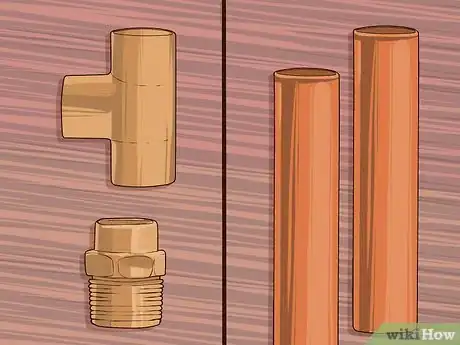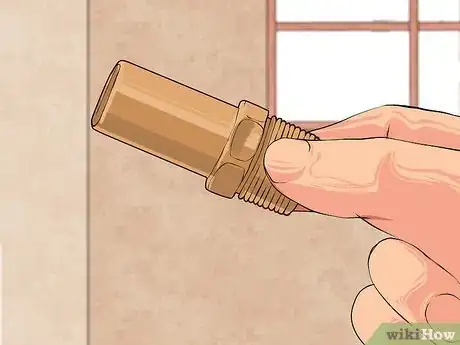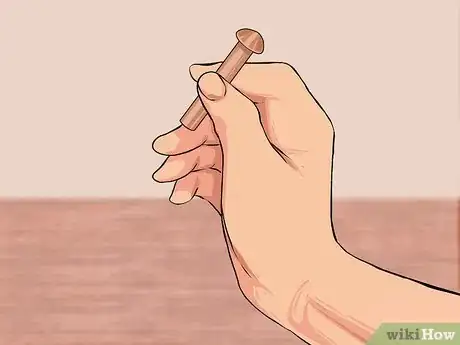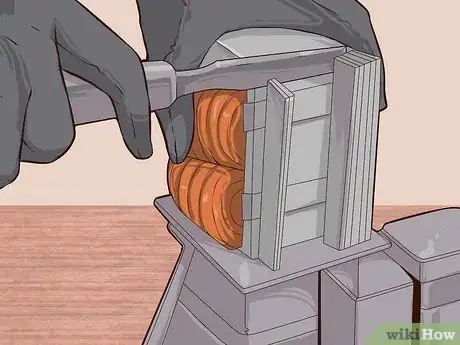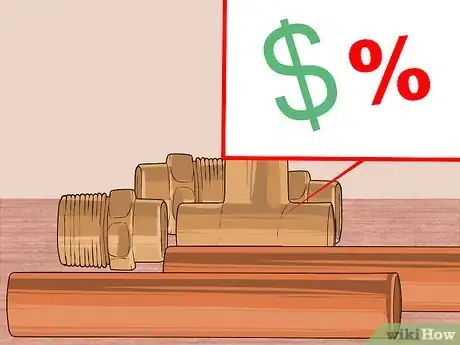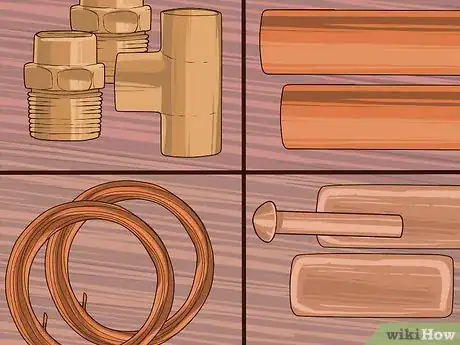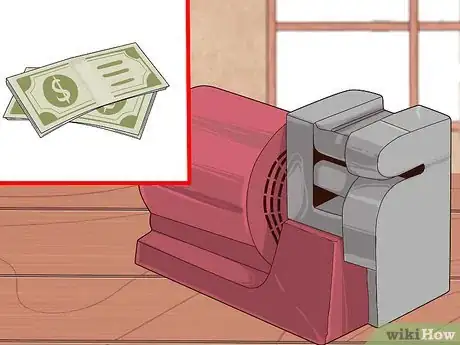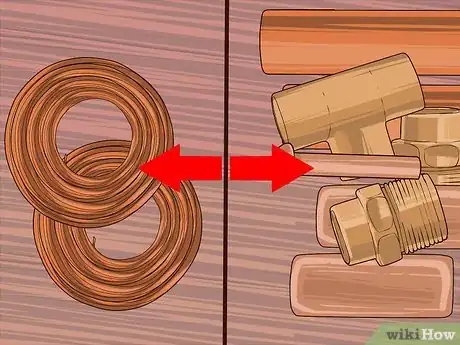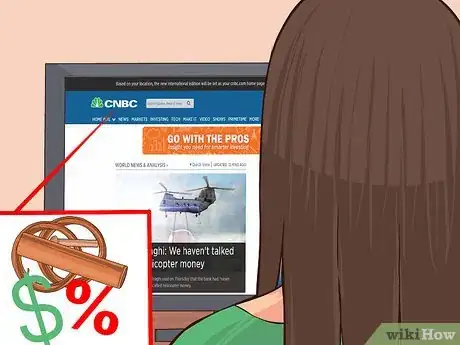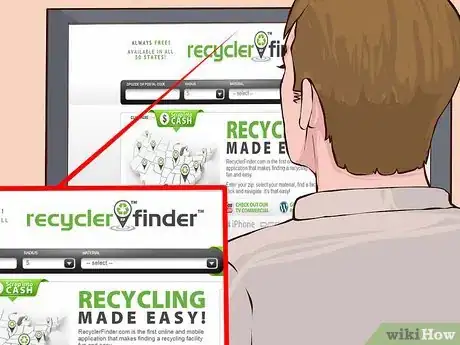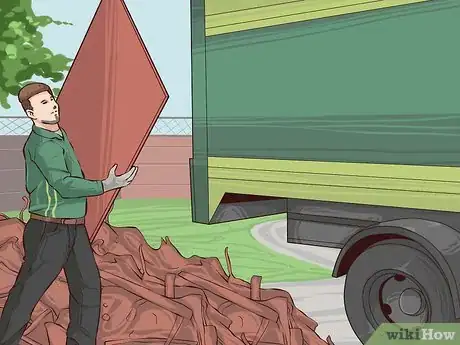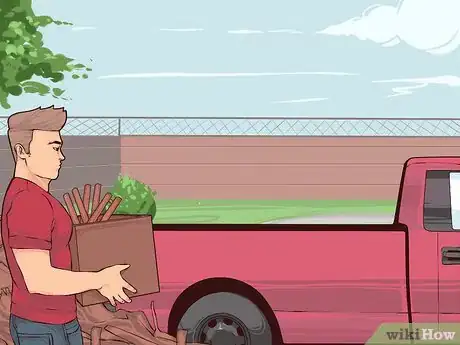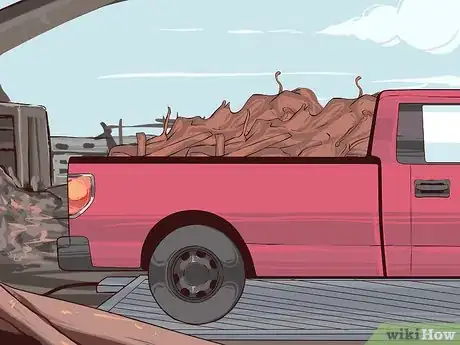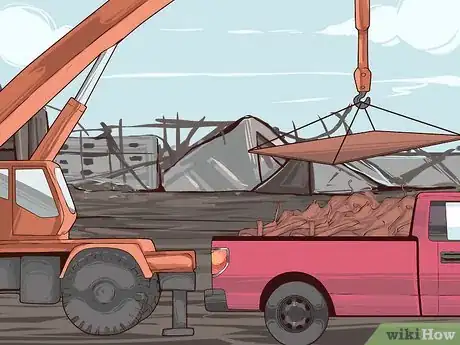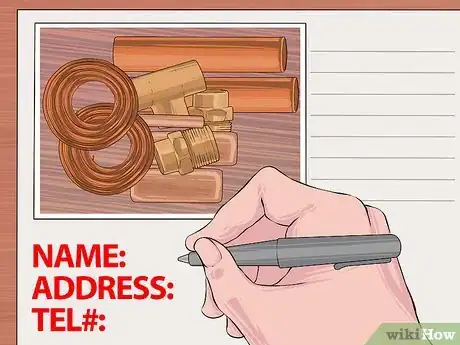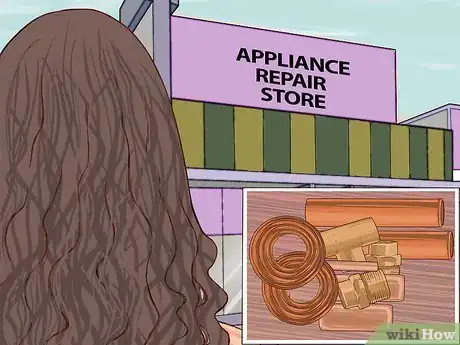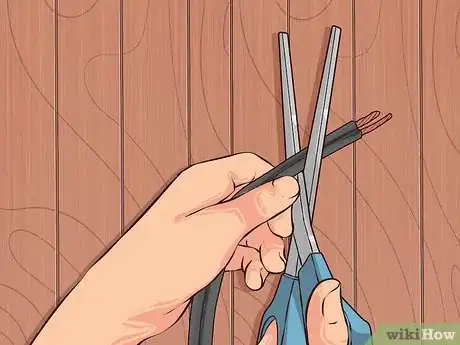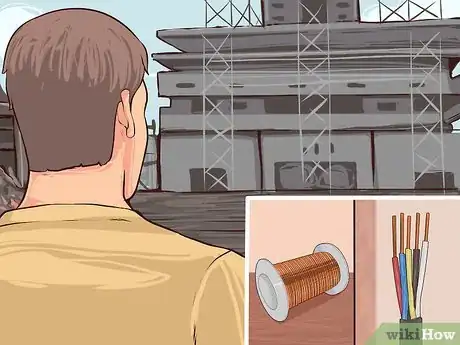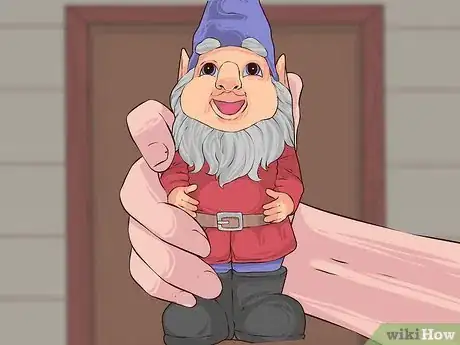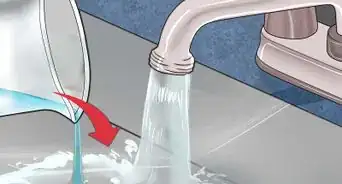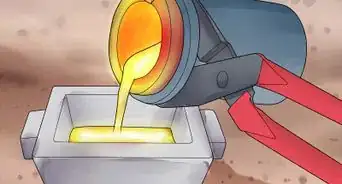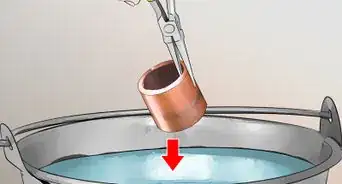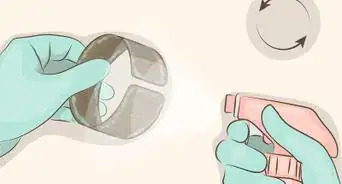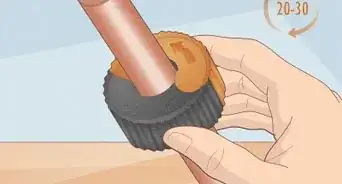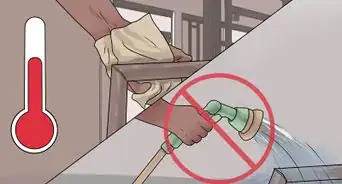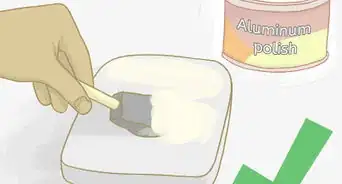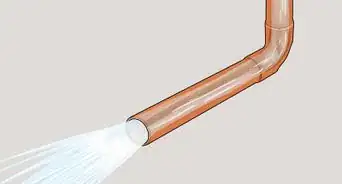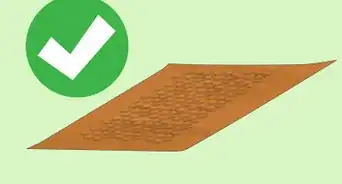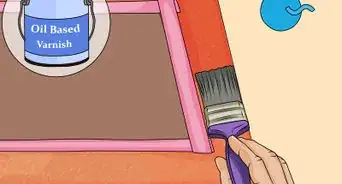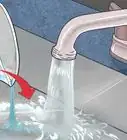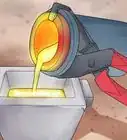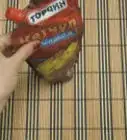This article was co-authored by Michael R. Lewis. Michael R. Lewis is a retired corporate executive, entrepreneur, and investment advisor in Texas. He has over 40 years of experience in business and finance, including as a Vice President for Blue Cross Blue Shield of Texas. He has a BBA in Industrial Management from the University of Texas at Austin.
There are 27 references cited in this article, which can be found at the bottom of the page.
wikiHow marks an article as reader-approved once it receives enough positive feedback. In this case, 100% of readers who voted found the article helpful, earning it our reader-approved status.
This article has been viewed 397,324 times.
Selling copper tends to be more lucrative than selling other kinds of scrap metal. If you have access to scrap copper at construction or renovation sites or at electronics or appliance repair shops, consider selling the copper for a profit. Know how to prepare the copper for sale to get the best price. However, be aware that businesses and scrap yards are now working closely with the government to catch copper thieves. Verify that you can legally remove copper from any site, and understand the consequences if you are caught stealing.
Steps
Sorting Your Copper
-
1Know the different of categories of copper. Scrap copper can fall into one of six different categories. The different categories each have different values. If you sort the copper yourself, you can be sure that the scrap yard purchasing it is giving you the appropriate price. Otherwise, they are likely to lump all of your copper into one pile and give you the lowest overall price.[1]
- Copper solids are the the most valuable. Copper solids are further categorized into three grades, depending on how pure they are.
- Copper non solids include dust and trimmings.
- Copper wire is generally found in electronics.
- Copper breakage is copper that has been recovered from items like motors and transformers.
- Copper alloy is copper mixed with other metals. This includes brass and bronze.
-
2Recognize copper solids. Copper solids are the most valuable kinds of copper to sell. They consist of pure, unalloyed copper. Unalloyed means that the copper is not mixed with any other kind of metal. The purity of copper determines its value because any added alloys interfere with the conductive properties of the copper.[2] Copper solids fall into one of three categories.
- Scrap copper number one is clean copper that is not less than 1/16-inch thick.[3] Bare bright copper wire falls into this category. Bare bright copper wire can be distinguished from the less-valuable tin-coated copper wire by its reddish color all the way through.[4] Some copper tubing can also fall into this category. The tubing must be free of solder, corrosion, paint and brass fitting to be considered number one copper.[5]
- Scrap copper number two is defined as unalloyed copper that is at least 96 percent pure.[6] Copper tubing that falls into this category includes burnt copper and copper with light tin coating, solder or brass fittings still attached[7]
- Scrap copper number three is light copper. Light copper solids are any copper sheeting that is less than 1/16-inch thick. Roofing copper generally falls into this category. It is found on roofs and gutters, and it may have tar or nails still attached.[8]
Advertisement -
3Identify copper non solids. This category includes dust, chips and turnings. It is generally not very valuable, and can fetch as low as 25 percent of the spot price of copper. If you have access to this type of copper, save it up until you get at least 10 pounds or more and then melt it down into nuggets before trying to sell it.[9]
- To melt copper dust, turnings or scraps, you will need materials specifically made for melting and casting metals. The melting point of copper is 1,981 degrees Fahrenheit,[10] so you need a kiln or furnace that can withstand that kind of heat. A potter's kiln can get hot enough to melt copper, but the oxidation process required to maintain that kind of heat will burn away a lot of the copper. Also, it will heavily contaminate the kiln. Look for bronze foundry casting tools and an electric or propane furnace made specifically for melting copper and other non-ferrous metals.[11]
- Artists often melt brass and copper for sculpture, and many have posted detailed tutorials for building a homemade furnace. Visit the Foundry Handbook for an example of a detailed tutorial for a DIY furnace using an oxy-acetylene torch for welding and a disposable helium tank or empty freon tank.[12]
- Be aware, however, that the cost of powering the furnace with propane or electric will eat up about half the value of the copper. Therefore, it might not be worth investing in this process unless you have a steady, reliable source of a great deal of copper non-solids.[13]
- Exercise caution when melting metal. For your safety, have safety gear such as protection goggles or face shield, dark welding goggles, oven gloves, a large flat iron pan to put the mold on, and running cold water.
-
4Sort scrap copper wire. While copper wire can technically be segregated into five grades, most scrap yards classify all wire as either high grade or low grade copper wire. High grade wire has a single layer of insulation, and low grade has a double layer. The five grades of copper wire range from 85 percent to 10 percent.[14]
- 85% wire is a thin wire with a diameter close to that of a pencil.
- 70% wire can generally be found inside electronics or appliances. An example is Romex machine wire without any attachments.
- 50% wire is found in extension cords and appliance cords.
- 35% wire is thinly gauged wire with many attachments. This wire is generally used for communications in VGA cables or telephone wires.
- 10% wire can be found in Christmas lights.
-
5Disassemble scrap breakage. Copper breakage is anything with copper winding.[15] Transformers, motors, alternators and magnetrons are all examples of copper breakage.[16] Disassemble parts to separate the copper from the steel in order to get the best price for the copper. Otherwise the scrap yard will lump the less valuable steel and copper together and you won’t get as much.[17]
-
6Sell the copper alloys. Common copper alloys are brass and bronze. Technically, bronze is an alloy of copper and tin, and brass is an alloy of copper and zinc. But scrap yards lump them together and sell them at the same price. They refer to them both scrap copper alloys.[18]
Preparing Your Copper for Sale
-
1Separate all metals before going to the yard. Before bringing your copper to the scrap yard, first sort your copper yourself into its three different grades. Sort tubing and wire into their different categories. This will give you an approximate idea of the overall value of your scrap copper. Unsorted and uncategorized lots of copper tend to sell for lower prices.[19]
-
2Strip insulation off copper wire to get the best price. Before purchasing an expensive wire stripper, decide if you are going to be selling enough copper wire on a regular basis to make the investment worthwhile. A general rule of thumb is that if you are stripping more than 1,000 pounds of wire per month, then you should purchase an electric wire stripper.[20]
- If you are stripping less than 1,000 pounds per month, you do not need to invest in a wire stripper.
- If you decide not to buy a wire stripper, warm the wire first. Place it in the oven on low or put it inside a black box and leave it in the sun. This makes the insulation softer and easier to remove with a handheld stripping tool.
- Never under any circumstances should you burn the insulation off the wire.
-
3Melt copper non solids into nuggets. Scrap yards will not purchase dust or turnings. Many sellers don’t even bother saving these because they are not valuable. If you have these materials, consider saving them until you have at least 10 pounds and then melting them down into nuggets with an electric or propane furnace made specifically for melting copper and other non-ferrous metals. A scrap yard may give you something for the nuggets, but be prepared to accept a price of up to 75 percent below market value for copper. It might not be worth the cost of the electricity or propane to run the furnace.[21]
- If you do decide to melt down copper dust and trimmings to sell it, invest in the right materials for melting copper. Copper melts at a temperature of 1,981 degrees Fahrenheit. Purchase metal casting materials that are specifically designed to withstand this kind of heat and melt copper and other non-ferrous metals. Typically, artists use these materials for casting bronze or copper sculpture. You can find a furnace and other materials for melting copper at a bronze foundry. Or, you can use an artist's tutorial, such as this one to build a furnace yourself.[22]
- Exercise caution. Equip yourself with safety gear such as googles, face masks, oven gloves and running water. If using a homemade furnace, carefully check all gas couplings for leaks. Keep all flammable materials a safe distance away from the furnace.
- Be environmentally conscious when melting metals. Use as much exhaust to heat the flame as possible so you are not wasting gas or electricity. Dispose of any waste from the process at a recycling center for hazardous materials.
-
4Separate copper breakage. Some scrap yards will purchase transformers and motors that contain copper at a special “breakage” price. But you should take them apart and separate the copper to get the best value.[23]
- When taking apart transformers, don’t bother trying to cut the steel because it is too hard. Instead, cut the copper. It is softer and more malleable.[24]
- Try heating transformers in a bucket over a fire for 20 to 30 minutes. After heating, fill the bucket with ice water. The transformers will become very weak from the sudden change in temperature and be much easier to take apart.[25]
- Exercise safety precautions. Wear safety goggles to protect your eyes. Wear heat resistant gloves to protect your hands. Handle hot pieces with tongs to avoid having to touch them.
-
5Research the best prices. Check commodity trading prices on NASDAQ or CNBC.com to find the latest price for high-grade copper. Other trade service websites, such as specialty metal sites or investment sites, list the daily prices for metals including copper.[26] [27]
- Prices for commodities, including copper, are affected by market forces and change every day. Between 2004 and 2009, copper surged in value from approximately $1 per pound to close to $4 per pound. The value dipped dramatically in 2009 during the recession to approximately $1.50 per pound. But the price rebounded by 2012 to an all-time high of approximately $4.50 per pound. Since then, the price of copper has decreased. As of September, 2015, the price of copper per pound is about $2.43 per pound.[28]
Selling Copper at a Scrap Yard
-
1Find a scrap yard. Consult a website like 1-800-Got Scrap, Recycler Finder or iScrap. These websites let you search by location and by material you have to sell. They also tell you the price the yard is offering for scrap.
- You can also find local scrap yards by looking in the phone book or doing a search on the internet. Call ahead to find out the price they are offering.
- Look for a scrap yard with a good reputation for customer service. Some scrap yard owners may try to take advantage of you. Find someone whom you can trust and with whom you can see yourself doing more business.[29]
-
2Call ahead to get their prices. If you have done your research about the current value of copper, this will help you assess whether the scrap yard is offering a fair price. Call several scrap yards and find the one with the best price. Try negotiating with them if you can to get the best price. If they won’t offer you a fair price, look elsewhere. [30]
-
3Find out if they will pick up. Some scrap yards will come to you to pick up your scrap. But they may charge you for the service. Compare what they are charging you with the cost of delivering it yourself, which includes your time and gas. Decide if having it picked up is worth the price.[31]
-
4Haul your copper to the scrap yard. If you decide to deliver it yourself, you can use whatever vehicle you choose. However, if you are going to be delivering lots of heavy loads, consider using a sturdy pickup truck. A pickup bed allows easy unloading. If you haul your copper in a closed vehicle like a car or SUV, it might be more difficult to unload.[32]
-
5Weigh your copper. Many scrap yards weigh your fully-loaded vehicle when you arrive. They use a large, accurate, pressure-sensitive plate to weigh your vehicle. After unloading the copper, they weigh your vehicle again. The difference is the weight of your scrap.[33]
-
6Unload your vehicle. Since copper is a non-ferrous material, the yard cannot use a mag crane to remove it from your truck. Other ferrous materials like iron and steel can be removed from truck beds by the magnet on the mag crane. But since copper is not magnetic, the scrap yard will likely use a forklift instead.[34]
-
7Register your personal information. Since copper theft has become such a problem, the government now requires the use of security systems to try to catch copper thieves. When you sell copper at a scrap yard, you will likely be required to register in a database that links a photo and a description of the copper you sold with your personal information. In addition, your thumbprint is recorded. Authorities can review these records to link sellers to reported copper thefts.[35]
-
8Get paid. Some scrap yards may pay you with cash. However, if the scrap yard is participating in the government's security database system, they may be prohibited from paying you in cash. In this case, they will likely have an automated teller machine that pays you. The scrap yard will give you a slip of paper with the specified payment. You can input this into the automated teller machine, and it will give you your cash.[36]
Finding Copper to Sell
-
1Find specific sources of copper that are always reliable. Most people who sell scrap copper don't rely on finding it by chance. They have sources on which they rely to find a steady supply of copper to sell. For example, you might be able to set up an agreement with an appliance repair store to pick up damaged goods you know contain copper. They might be happy to allow you to recycle what would otherwise wind up in a landfill.[37]
-
2Find copper wire inside old electronics. Cut wires off the outside. Wire can be snipped off of TV’s and monitors with scissors. Cut off the plugs from the end to add to your brass pile. The small black boxes on charging cables can be cut off and put in your transformer pile. Search inside for insulated wires and connectors.[38]
- Thinner insulated copper wires can be found throughout old laptops, VCR’s and DVD players.
- Take apart desktop computer towers to find the ribbon wire and insulated connectors in the board and hard drive.
- Large appliances are often sold for steel. But don’t forget to look inside for copper wiring.
- Small appliances such as coffee makers, AC units, fans, blenders and toasters may all have copper wiring inside.
- Small electronics, such as cell phones, cameras and hand-held games are good places to search for copper wire.
-
3Search construction and remodeling sites. Electricians scrape up electrical wire for scrap during demolition. Plumbing materials also contain copper and brass. Always check with the owner or a construction supervisor before taking copper away from a property that you do not own. Even if you are being paid to clean a demolition site, that does not give you a claim to the wire or any other materials you find there. [39]
-
4Look for copper in your home. Look for old statues or décor. Old garden gnomes, statues and other lawn ornaments may contain copper. In addition, sometimes roofing material is made from copper sheeting. Roofing copper is recyclable and environmentally friendly.[40]
-
5Understand the consequences of copper theft. Unless you have permission to remove copper from a property you do not own, it is considered theft. Copper theft has been on the rise since the value of copper started to increase in 2004.
- CNBC refers to copper theft as an epidemic that is sweeping the United States.[41]
- The FBI states that copper theft is threatening the infrastructure of the United States. Thieves are targeting electrical sub-stations, cellular towers, telephone land lines, railroads, water wells, construction sites, and vacant homes. Delivery of electricity, water, telecommunications, transportation and security and emergency services is disrupted. This poses a threat to public safety and national security.[42]
- Businesses are taking steps to protect themselves from copper theft. They are installing security cameras, securing metals in locked areas, installing alarms, limiting access to buildings and increasing lighting.[43]
- In many states, the difference between a misdemeanor and a felony has to do with the value of items stolen. Since copper is so valuable, copper thieves are often charged with a felony when caught. Also, since copper thieves can knock out traffic lights or disrupt 911 services, other felony charges such as disrupting public service may be filed.[44]
Warnings
- Whenever using heat or flame to melt copper or take apart breakage, always use safety precautions. Wear safety goggles to protect your eyes and gloves to protect your hands.⧼thumbs_response⧽
- Copper dusts and mists can affect the body if inhaled or come into contact with the eyes or skin. Wear proper protective items such as face masks, gloves and safety goggles to prevent breathing in copper dust or exposing eyes or skin to irritants.[45]⧼thumbs_response⧽
References
- ↑ http://www.scrapmetaljunkie.com/236/how-to-sell-scrap-copper-2
- ↑ http://www.copper.org/resources/properties/microstructure/coppers.html
- ↑ http://www.scrapmetaljunkie.com/236/how-to-sell-scrap-copper-2
- ↑ https://iscrapapp.com/metals/1-bare-bright-copper-wire/
- ↑ https://iscrapapp.com/metals/1-copper-tubing/
- ↑ http://www.scrapmetaljunkie.com/236/how-to-sell-scrap-copper-2
- ↑ https://iscrapapp.com/metals/2-copper-tubing/
- ↑ https://iscrapapp.com/metals/3-roofing-copper/
- ↑ http://www.scrapmetaljunkie.com/236/how-to-sell-scrap-copper-2
- ↑ http://www.onlinemetals.com/meltpt.cfm
- ↑ http://www.potters.org/subject87459.htm
- ↑ oxy-acetylene torch for welding
- ↑ http://www.potters.org/subject87459.htm
- ↑ http://www.scrapmetaljunkie.com/236/how-to-sell-scrap-copper-2
- ↑ http://www.scrapmetaljunkie.com/236/how-to-sell-scrap-copper-2
- ↑ http://www.scrapmetaljunkie.com/257/how-to-scrap-transformers-2
- ↑ http://www.scrapmetaljunkie.com/236/how-to-sell-scrap-copper-2
- ↑ http://www.scrapmetaljunkie.com/236/how-to-sell-scrap-copper-2
- ↑ http://www.scrapmetaljunkie.com/236/how-to-sell-scrap-copper-2
- ↑ https://iscrapapp.com/blog/how-to-strip-your-copper-wire-for-scrap/
- ↑ http://www.scrapmetaljunkie.com/257/how-to-scrap-transformers-2
- ↑ http://www.potters.org/subject87459.htm
- ↑ http://www.scrapmetaljunkie.com/236/how-to-sell-scrap-copper-2
- ↑ http://www.scrapmetaljunkie.com/257/how-to-scrap-transformers-2
- ↑ http://www.scrapmetaljunkie.com/257/how-to-scrap-transformers-2
- ↑ http://data.cnbc.com/quotes/%40HG.1
- ↑ http://www.nasdaq.com/markets/copper.aspx
- ↑ http://www.infomine.com/investment/metal-prices/copper/all/
- ↑ https://iscrapapp.com/blog/5-common-mistakes-you-can-make-when-scrapping-metal/
- ↑ https://iscrapapp.com/blog/5-common-mistakes-you-can-make-when-scrapping-metal/
- ↑ http://www.scrapmetaljunkie.com/236/how-to-sell-scrap-copper-2
- ↑ http://www.popularmechanics.com/science/environment/g169/how-to-sell-scrap-metal-for-money/?slide=2
- ↑ http://www.popularmechanics.com/science/environment/g169/how-to-sell-scrap-metal-for-money/?slide=7
- ↑ http://www.popularmechanics.com/science/environment/g169/how-to-sell-scrap-metal-for-money/?slide=8
- ↑ http://www.popularmechanics.com/science/environment/g169/how-to-sell-scrap-metal-for-money/?slide=13
- ↑ http://www.popularmechanics.com/science/environment/g169/how-to-sell-scrap-metal-for-money/?slide=14
- ↑ http://trustwaymetal.com/where-can-i-find-copper-to-scrap/
- ↑ https://iscrapapp.com/blog/6-most-common-places-to-find-scrap-copper-wire/
- ↑ https://iscrapapp.com/blog/6-most-common-places-to-find-scrap-copper-wire/
- ↑ https://iscrapapp.com/blog/6-most-common-places-to-find-scrap-copper-wire/
- ↑ http://www.cnbc.com/id/100917758
- ↑ https://www.fbi.gov/stats-services/publications/copper-thefts
- ↑ http://www.nationwide.com/metal-theft-prevention.jsp
- ↑ http://www.abqjournal.com/329266/opinion/punishment-for-copper-theft-must-fit-the-crime.html
- ↑ http://www.cdc.gov/niosh/docs/81-123/pdfs/0150.pdf
About This Article
Before you sell copper, sort it into solids, non-solids, and wire. Solid copper is the most valuable while non-solid copper is not very valuable. Copper wire can vary in price but, to get the most money, make sure to strip insulation off of it. Then, find a scrap yard with a good reputation for honest business and fair prices. Once at the scrap yard, they’ll weigh and unload your copper while you register your personal information. For tips on finding copper to sell, continue reading below!
